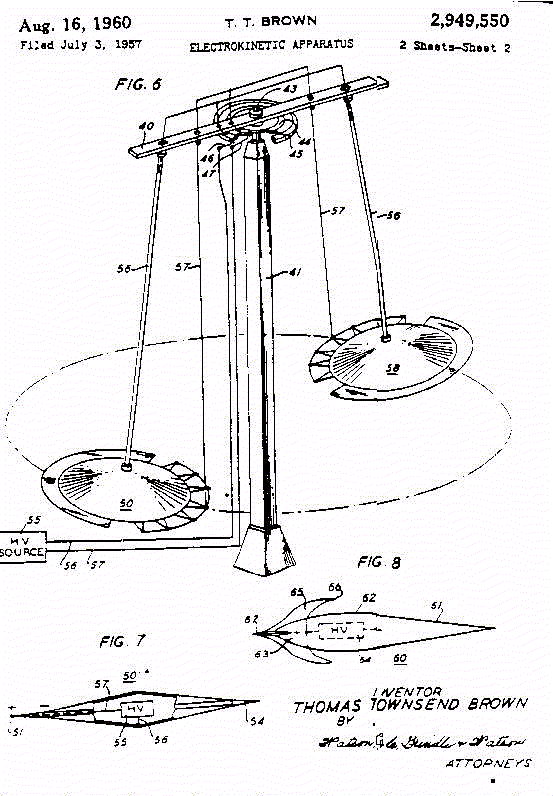
The effect of high voltage capacitors pushing on air was first noted by his professor at Denison University, Paul Biefeld. T. T. Brown studied the effect for 28 years starting in 1923. He believed it to be an effect of electrogravitation, that is, electric charge affecting the gravity field. In many of his experiments (and in many of the author's experiments) the test piece moves sideways rather than up or down. This would point toward a possibility of electroinertia, that is, electric charge affecting the inertia of an object. (Keeping an open mind, the effect could just be an electrostatic propulsion.)
Irregardless of its precise mechanism of operation this effect may prove extremely useful. Some of T. T. Brown's tests were conducted in a vaccuum which shows that only part of the push would come from pushing on air. The rest of the push could come from pushing on the "fabric of space" (or ether also known the "zero energy field" see article by Hal Puthoff elsewhere in this site.) Also his finding that the effect is proportional to voltage gives hope for strengthening the effect with higher voltage.
Now observe the teardrop shape of his test piece in the cross section, figure 8 in the diagram above. The teardrop shape also appears in the author's confirmation tests, but with only one charged metal plate while Brown used two charged metal plates.
 Go Back
Go Back